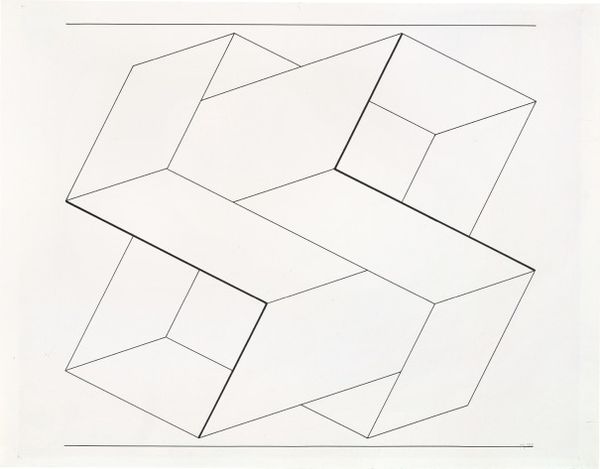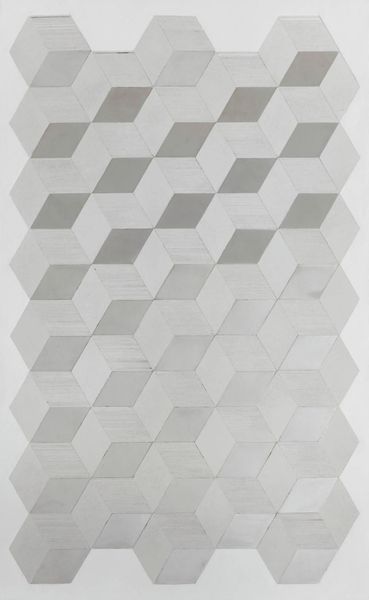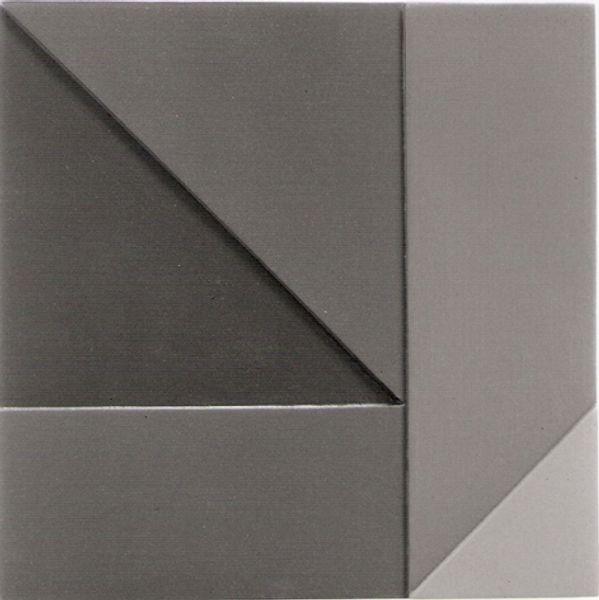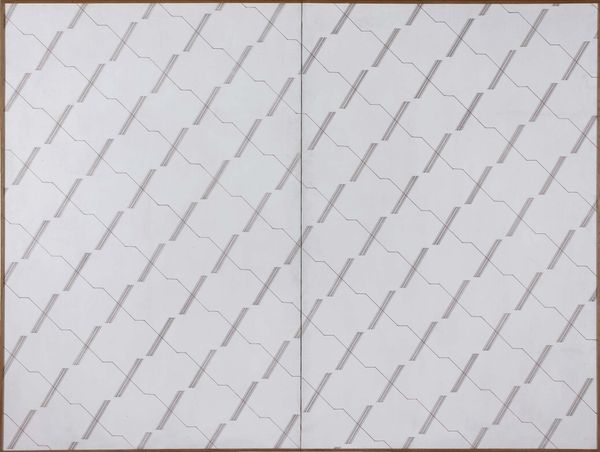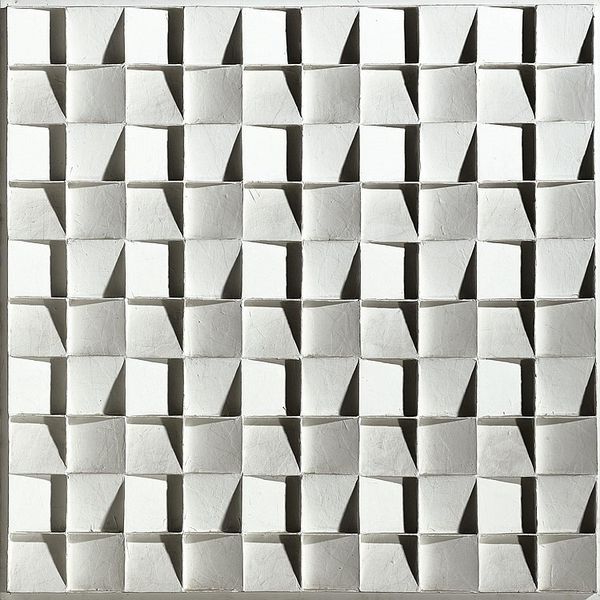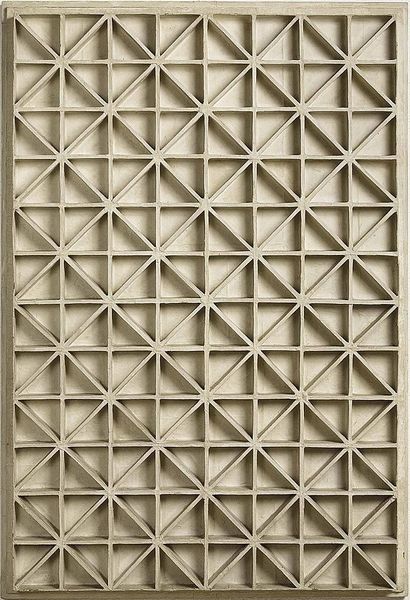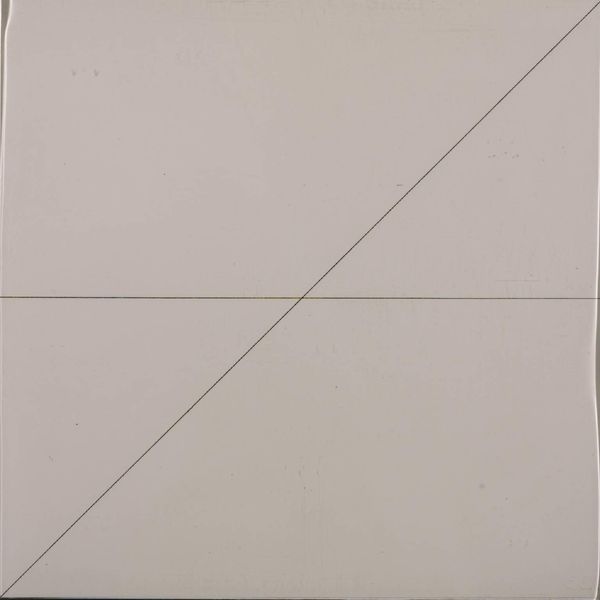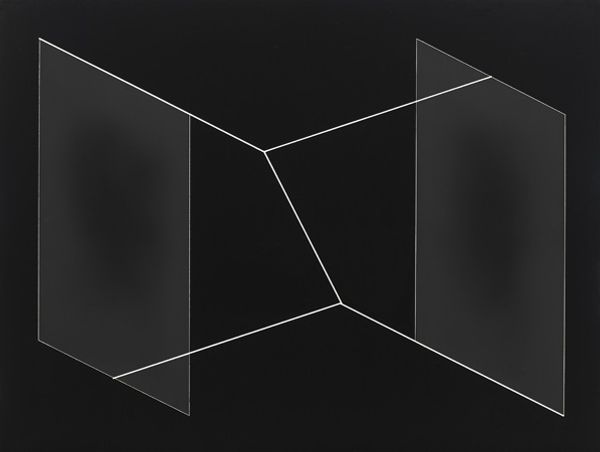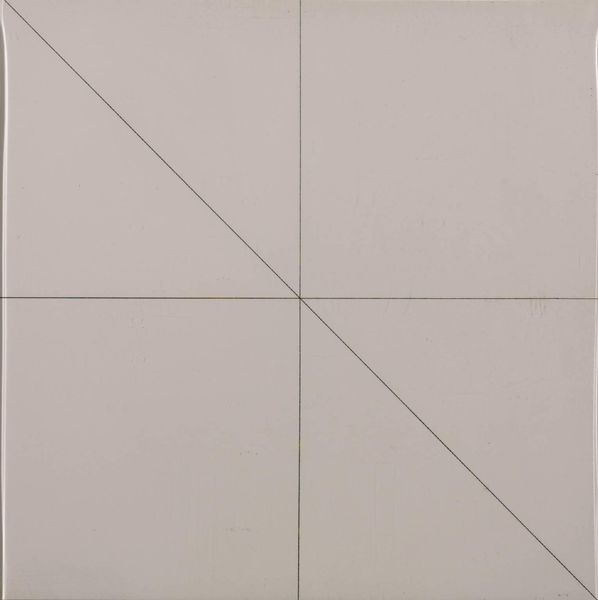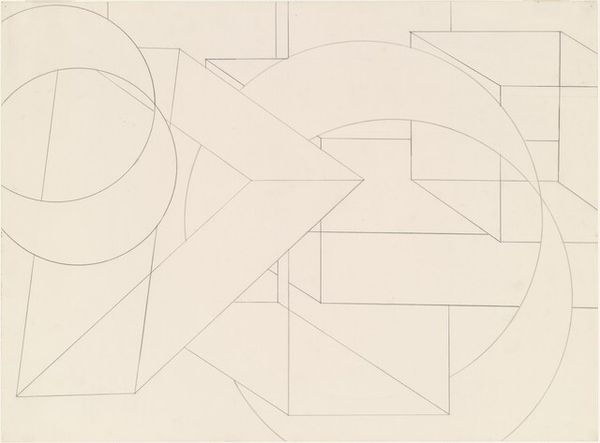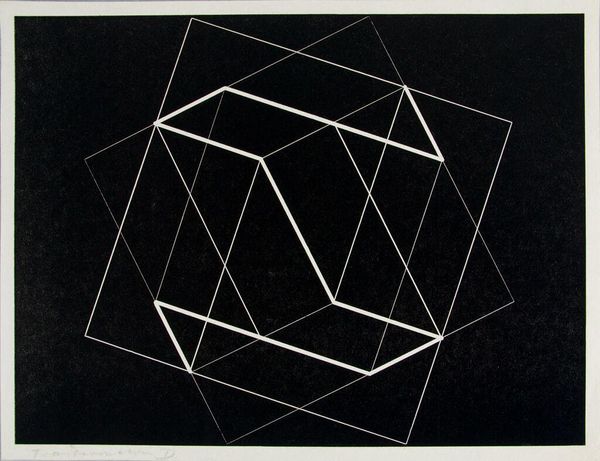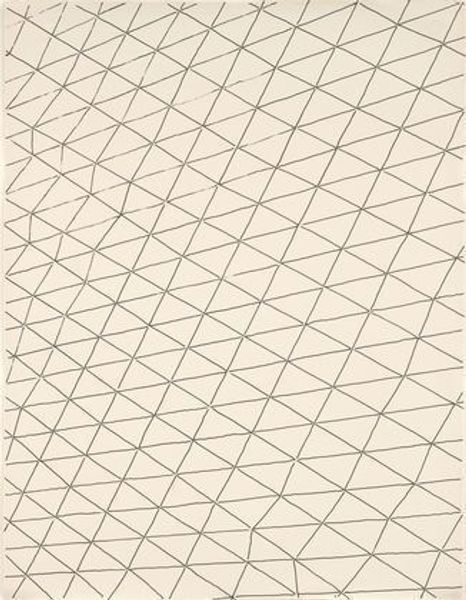
#
random pattern
#
minimalism
#
pattern
#
op art
#
geometric pattern
#
repetitive shape and pattern
#
bold defined shape
#
geometric
#
geometric-abstraction
#
simple pattern
#
vertical pattern
#
line
#
pattern repetition
#
layered pattern
#
combined pattern
#
hard-edge-painting
Copyright: Josef Albers,Fair Use
Curator: Albers' "Structural Constellation" from 1955 presents a fascinating study in line and form. Editor: This piece is incredibly intriguing! Its use of repeating geometric shapes to create the illusion of depth is quite mesmerizing. It almost feels like a blueprint. What should we make of the artistic statement here? Curator: Let's consider what's absent. Albers strips away color, texture, any illusion beyond line itself. Isn’t he really asking us to focus on the very process of constructing an image? The precise labor, the geometric tools? How does the context of post-war material scarcity influence your reading of it? Editor: That's an interesting perspective! I hadn’t thought about the emphasis on process itself. Does his hard-edge style signify any pushback or reflect available resources, maybe even a critique of previous art movements' excess? Curator: Precisely! He challenges traditional distinctions between "high" art and the draftsman's craft. Consider the implications of presenting a design, a structure, as art. Doesn't it elevate the value of planning, of labor itself? How accessible do you find the lines and form? Are you compelled to touch the surface and find the edges? Editor: The clean lines and simple forms almost feel mass-producible, a concept that both democratizes art and maybe comments on the rise of industry. Curator: Indeed. This tension between handmade precision and industrial possibility is key. By examining its making, or rather our perception of its potential making, we reveal Albers' commentary on production. Now, how might a viewer accustomed to painterly expression react to its hard edges and planned geometries? Editor: I see it now. He uses minimalism to emphasize the underlying structures, in art as well as manufacturing or building practices. Curator: And in doing so, reveals the often-invisible hand behind them. It definitely makes you reconsider where art begins and how we value different forms of making.
Comments
No comments
Be the first to comment and join the conversation on the ultimate creative platform.
